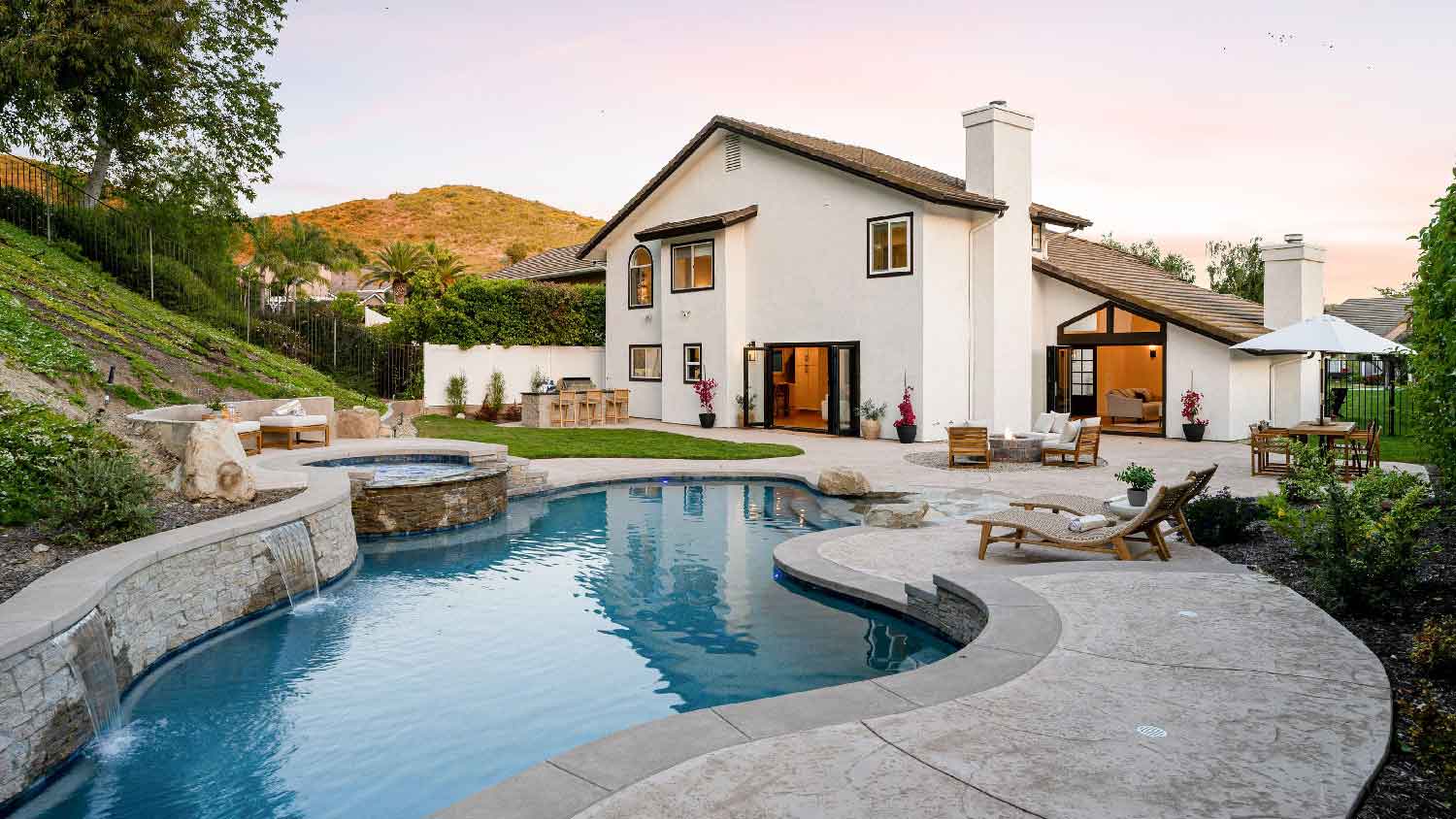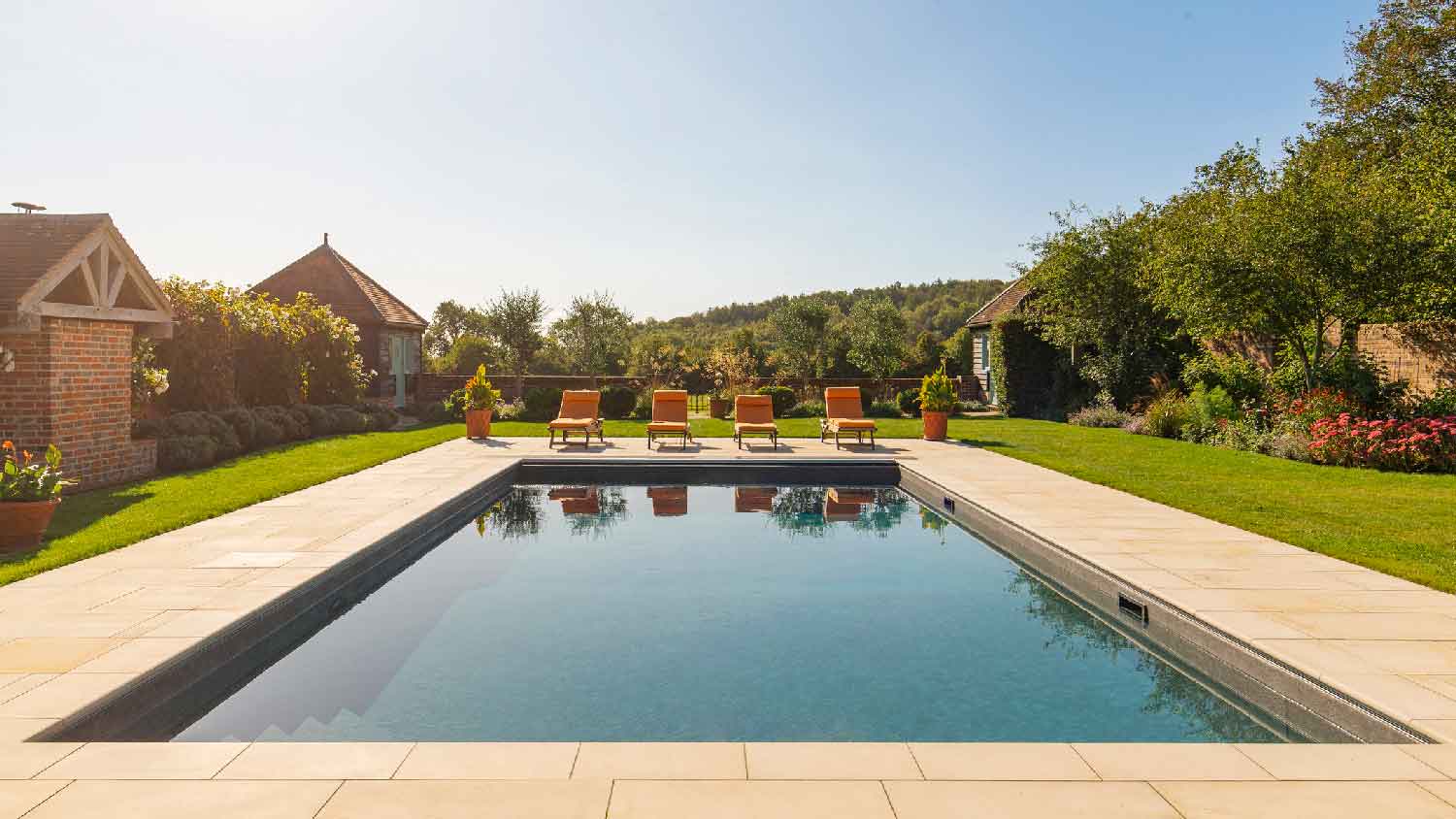Can You Put a Hot Tub in Your Basement?
Bring the bubbles inside


Putting a hot tub in a basement is possible with careful planning.
Advantages include privacy, convenience, control, and protection from the elements.
Cons include the cost and difficulty of getting a hot tub into a basement and installing it inside.
You’ll also have to think about budget, size, weight, ventilation, plumbing, and electrical.
Don’t attempt to install an indoor hot tub yourself—leave it to the pros.
If you’ve been daydreaming about a hot tub that’s out of the elements, convenient, and totally under your control, you might be wondering if you can put a hot tub in a basement. The short answer is yes—if you take steps to do it right. We walk through everything you need to know about why and how to install a basement hot tub, including important factors to consider and tips for safely completing this project.
Reasons to Install a Hot Tub in a Basement
If you’re considering installing a hot tub in your basement, you likely have good reasons for doing so. Some of the most common include the following:
Privacy
Convenience—enjoy hot tub benefits in your own home
Maximize unused space inside your home
Control over the environment and climate
Protection from the elements
More energy-efficient operation
Reduced wear and tear on equipment
Ability to install and protect entertainment systems
If your home is in a busy neighborhood, surrounded by other homes, your yard is small, or your climate isn’t ideal, choosing to install an indoor hot tub can make a lot of sense. It’s much easier to control privacy and access, have an ideal temperature, and protect your hot tub and related systems if they’re inside your home.
Disadvantages of Installing a Basement Hot Tub
Putting a hot tub in a basement isn’t an easy process. You’ll need to carefully plan every step before you begin. Here’s why:
Getting a hot tub into a basement can be a difficult and expensive process.
Indoor hot tub costs can rise quickly since most existing basements aren’t equipped to hold a hot tub and lack the proper drainage systems for cleaning and refilling.
It can be expensive to retrofit basements to fit a hot tub and install the necessary plumbing and electrical systems.
Hot tubs are heavy, and not all floors can support the weight of a filled tub.
Not all basements are large enough to accommodate a hot tub.
Steam and humidity can create problems if your basement doesn’t have enough ventilation; adding ventilation will increase the project cost.
Overflows and leaks are inevitable, and this can cause massive water damage and mold problems if the basement isn’t waterproofed or equipped for easy, fast cleanup or automatic draining.
Hot tubs can emit strong chlorine or chemical smells.
| Pros of a Basement Hot Tub | Cons of a Basement Hot Tub |
|---|---|
| Absolute privacy | Can be difficult to get into the home |
| Convenience | Requires the correct flooring, electrical, plumbing, and drainage setup |
| Control over the environment and climate | Can require expensive basement retrofits |
| Greater energy efficiency | Added ventilation is required |
| Reduced wear and tear on equipment | Can make homes smell like pool chemicals |
Factors to Consider

As you plan your indoor hot tub addition, keep these important factors in mind.
Budget
If you’re wondering where to put a hot tub in your home, it’s always smart to think of finances first. Your budget will dictate whether installing an indoor hot tub is possible; once you know if it’s in your budget, you’ll want to keep track of your budget as you shop and plan. As you’ll read below, the cost of the hot tub is just one expense in a much bigger project, and remaining clear-eyed about the total cost is important.
Size
While hot tubs come in sizes from two-person seating to party models that can fit a dozen people or more, all of them are large and heavy. If you want to install one in your basement, you’ll need to be sure you have ample space for the hot tub, including:
Enough room around the unit for panel access and maintenance
Headroom over the hot tub to allow for comfortable sitting and standing
Large enough entry space to get the hot tub into the basement
Start by measuring your space and considering how large of a hot tub you want to install.
If you’re building a new home, adding a hot tub will be a simpler process, as you can design your space around the inclusion of a spa. For existing homes, on the other hand, you’ll likely need to find a hot tub that fits your space, rather than making your space fit your hot tub—unless you have a big basement and are willing to expand your budget.
Weight
A filled hot tub can weigh over 1,000 pounds, and not all flooring is strong enough to support that much weight in a small footprint. Most basements have cement slab flooring, but the thickness and quality of slab concrete can vary greatly.
If your flooring isn’t strong enough, adding a hot tub can cause serious structural damage over time. It’s best to speak with a structural engineer along with a hot tub installation professional near you about weight and structural concerns.
Ventilation
Hot tubs generate a lot of humidity, and moisture is the enemy of any building materials, so you’ll need a plan to deal with steam if you want an indoor hot tub. This can include adding ventilation in the form of exhaust fans, dehumidifiers, windows, or a combination of ventilation sources to keep the humidity balanced. If you don’t get this step right, you can set yourself up for a battle with mold, mildew, dry rot, and other problems that can wreak havoc on your home and health.
Plumbing Requirements
Draining and refilling a hot tub are two major components of maintenance, and you’ll need to have water access and drainage to keep your hot tub water clean and fresh. This can include a spigot or other water access close to your new hot tub location and a drain or pump to remove old water. In many cases, you may need to include new water lines, drain lines, and other plumbing work in your budget. Plan for about $350 to $2,000 for this phase of the project, but know that your total may vary.
Electrical Access
Home hot tubs use a lot of power, and most require a 220V to 240V dedicated circuit, along with a 50A breaker or larger. These aren’t standard electrical hookups found in most homes, so chances are good you’ll have to hire an electrician to add a new power source—depending on the area in which you live and the location you’ve chosen for your new hot tub, this can cost $300 to $800 or more. However, if your electrical panel is older or already under stress, you may need to invest in a new panel to support the added voltage.
Hot Tub Types and Details
Along with the size of your new hot tub, you’ll also want to think about the different types of hot tubs and amenities. With so many options, finding just the right one can take a little time. One of the biggest factors to consider is chemical treatments; if you don’t want your entire home to smell like a pool, you may want to choose a saltwater hot tub or chlorine-free hot tub chemicals.
Environment
Do you want your hot tub to be in a dedicated room with entertainment options, or would you like to be surrounded by other comfort features? This can substantially increase your budget and the scope of the project. For example, you could keep it simple or invest in a hot tub room with temperature control, tiling or specialty flooring, seating, a shower or shower room, a fireplace, and entertainment features, like video and audio. Considering your ideal environment and amenities before you start demolition or installation is smart.
Tips for Installing an Indoor Hot Tub
Thinking of installing a hot tub in your basement? Here are the top tips for the task:
Don’t attempt to DIY this. Hot tubs are heavy and potentially dangerous for most homeowners to move inside and downstairs by themselves. You also want a hot tub professional to verify that your basement is properly engineered and equipped for a spa.
Know and follow all code requirements. Hot tub installation must adhere to codes regulating the indoor operation of electrical appliances.
Choose a hot tub that’s built for indoor use. Most have a lower water volume and are smaller in size. Some can even plug into 120-volt outlets.
Be aware that the spa pump will make noise, so think about the location of the hot tub in relation to bedrooms and common rooms.
Be sure you have a solid floor and the right plumbing, electrical, and ventilation systems before you begin.
Consider ease of access, including how you enter and exit the room, access the hot tub, and get to a bathroom.
Expect and prepare for overflow. Install waterproof, non-slip flooring, and consider a floor drain.
Hot tubs can have a distinctive odor. You can choose alternative chemicals or use an ozonator or UV system to help limit smells.
Think about maintenance—is this something you’ll keep up with, or do you need to hire a company to provide routine services and repairs?





- 8 Must-Know Tips for Installing an Indoor Hot Tub
- How Long Does a Hot Tub Last?
- Replacing vs. Refurbishing a Hot Tub: What You Should Know
- 7 Types of Hot Tubs to Add to Your Home or Backyard
- 24 Hot Tub Deck Ideas for a Backyard Paradise
- The Ins and Outs of Hot Tub Electrical Requirements
- What’s the Ideal Hot Tub Temperature for You?
- How Does a Hot Tub Work Its Magic?
- How to Clean a Hot Tub Filter Properly
- Are Hot Tubs Worth It? Pros and Cons Explained










